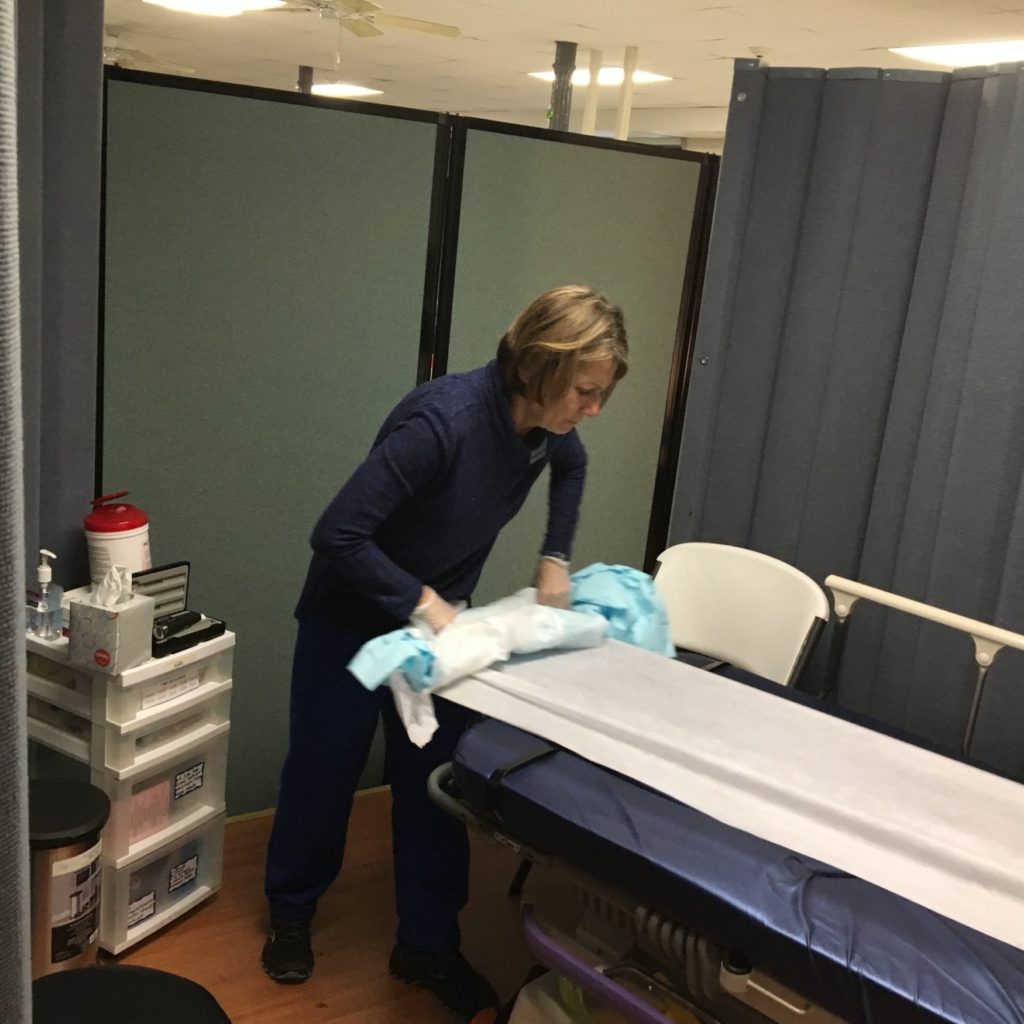
Experts with Johns Hopkins CEPAR are familiar with assisting communities around the nation and world in the aftermath of hurricanes and other natural disasters. However, recently their expertise was tapped to assist in their own backyard in Baltimore.
The Esperanza Center, a comprehensive immigrant resource center in Fells Point, was forced to shut down after suffering extensive damage from a fire at neighboring Budeke’s Paint in September 2018. Shortly after the fire, the center found space to relocate to at nearby Assisi House of St. Patrick’s Church. But staff at the Esperanza Center’s primary care clinic, which serves uninsured and undocumented adults and children, needed assistance designing the temporary clinic’s layout in the new space. Staff quickly found an ally in CEPAR. Gai Cole, chief strategy officer, and Lauren Sauer, director of operations, who are among CEPAR’s experts with extensive backgrounds in disaster response, led the project for CEPAR.
“I think [the Esperanza Center clinic representatives] understand that we have some problem-solving capability and that we care about the community of Baltimore the same way they care about the community of Baltimore,” Cole says.
“They were really helpful in identifying the layout of the clinic: how much space we needed for each exam room, how to create privacy yet not impede airflow,” says Katie Phillips, Esperanza Center clinic coordinator. CEPAR also brought in experts from the Johns Hopkins Departments of Health, Safety, and Environment and Hospital Epidemiology and Infection Control to assist in designing the clinic’s layout as well as connected clinic staff with vendors for exam tables, clinical equipment and wall dividers.
The temporary space, which opened in October, includes three exam rooms, two triage rooms, a point-of-care testing area, waiting and reception areas and six workspaces for staff.
“Honestly, we were spinning,” says Phillips. “And to have people with that kind of expertise who literally were here ready to help us, I don’t know what we would have done without them.”
“The clinic lost everything just as many government and relief organizations were preparing for Hurricane Florence to hit the East Coast,” Sauer says. “This collaboration highlights the importance of knowing your community and building informal networks, so you have a support system in times of need. CEPAR was happy to step in and provide this important service, which we don’t always have the opportunity to do so close to home.”
Johns Hopkins Community Physicians also heeded the clinic’s call for assistance. The internal medicine and family practice divisions donated thermometers, pulse oximeters, a blood pressure machine, blood pressure cuffs and wound care supplies.
Cole says CEPAR’s involvement in the relocation is all part of the mission of Johns Hopkins. “It’s important to help people because that’s what we do and why we exist,” he says. “We made sure that the clinic could be there when their patients needed them–for flu season, for the next day when they have abdominal pain, for the next week when a pregnant mother’s baby is due. So that’s what we did.”
It’s unclear how long the Esperanza Center will remain in the temporary space. The space also includes English as second language classes, translation services, employment, and food assistance and more.
Related articles:
How a Fells Point immigration center is rebuilding with the help of a Johns Hopkins disaster group
